Why You Should Follow Lesser-Known and Local Photographers
![]()
Between 2008 and late 2016, I took tens of thousands of pictures and proudly vomited the vast majority of them online. While I’d toyed around with things like depth of field and long exposures, I didn’t understand anything about photography, so my camera rarely left ‘auto’. I’d checked out an online tutorial or two, but as far as I was concerned, ‘exposure compensation’ was something victims got after winning a public indecency lawsuit.
That all changed when I stumbled upon the work of a particular professional photographer for the first time. It was what I can only describe as ‘life-changing’. I know that may sound hyperbolic, but his work literally had an impact on the way I think about photography, and thus my life. I don’t mean to single out this particular photographer, but up until this point, I hadn’t really been exposed to professional photography.
Upon viewing his work, I was struck with the excitement of what photography has the potential to be, while being forced to confront the soul-crushing reality of what my images were, namely mediocre snapshots. I’d been taking photos for eight years, and every single one of them was hot garbage, compared to what I was looking at. Luckily, the positive feelings outweighed the negative ones, which motivated me to learn more about my camera, leading to the quality of my work improving.
Had I not come across the work of this professional when I did, I may very well still be taking mediocre snapshots in blissful ignorance. From there, I continued to seek out the work of famous photographers with huge followings for inspiration and to further my own growth. Over the years that followed, my work continued to improve thanks to the guidance I was getting via YouTube videos, breathtaking portfolios, photography outlets, and critiques from my peers.
Not long after that, I noticed something had begun to change. Not with the quality of the work I was seeing, but with the kind of work I found myself connecting to. While I still appreciated the work of the famous photographers I’d looked up to, I started to feel disconnected. I’d gone from being inspired by their work to feeling something more akin to apathy. I’d spend my time on various social media platforms scrolling past epic landscape after epic landscape feeling nothing.
It was around this time that I started feeling more inspired by hobbyists, lesser-known photographers, and local photographers. For the past few years, I’ve made more of an effort to start following the work of non-professional photographers, photographers with smaller social media followings, and local photographers. This seemingly small change has helped my photography in ways that the famous photographers I was following couldn’t.
Now, I’m not here to say I think you should stop following the work of established photographers, rather I’d like to highlight the benefits of broadening your exposure to photography by following photographers from all walks of life, including hobbyists and lesser-known local photographers, even if they have less experience and a much smaller social media following than you.
The Benefits of Following Lesser-known Photographers
The Mystery Box
One of the things I love most about following hobbyists is that you never really know what you’re going to get. As much as I admire the famous photographers I follow, I do find myself growing curious about what else they’re capable of. I often wonder what a Mads Peter Iversen citycape would look like, how Thomas Heaton would approach abstract architecture, what would happen if you plopped Peter Stewart into a woodland scene, or how Makoto Hashimuki would handle street photography. These are all photographers who have inspired me and continue to do so, but just the thought of what their unique approach would look like makes me a bit giddy.
With the lesser-known photographers I follow, I’m sometimes surprised by what I see on social media. One week it’s a panoramic landscape, the following week it’s dog portraits, and then a few days later it’s food photography. Are you sacrificing quality when you shift from one type of photography to another? Sure, but when you don’t have any expectations to live up to, it doesn’t really matter. If your image is going to get 30-50 likes regardless of how mind-blowing or less than optimal it is, you can afford to experiment. Again, I’m not saying you should stop following all the famous photographers who spend the majority of their time in similar locations, nor I am criticizing that type of photographer, rather I’m trying to highlight the advantages of broadening your exposure to photographers who have the freedom to try new things.
The Benefits: This can encourage you to stop limiting yourself. I went from exclusively shooting landscapes to shooting abstract architecture, ICM, street photography, travel photography, and even dabbling a bit in portraits with my daughter. Since moving to a beach city, I’ve started shooting more beach landscapes incorporating surfers, fishers, and other beachgoers. Seeing others experiment with different subjects has helped me see the scenes around me in a different way.
As I mentioned in my last write-up, I went from despising people in my frame to using them to enhance a scene. I owe this change entirely to my exposure to lesser-known photographers who needed to shoot the scene they had. With this mindset, your camera can come with you, regardless of where you go. This also means your camera spends more time in your hands than in your bag.
As for my personal rewards, my abstract architecture photography has gained the most international recognition, the vast majority of my sales have come from landscape and cityscape images, and I run street photography workshops in Yokohama with a Tokyo-based company. Being a well-rounded photographer may not be getting me any closer to being a household name, but it’s brought me all the success I have enjoyed, modest though it may be. The more willing you are to try new things, the more likely you are to stay active as a photographer and find your calling.
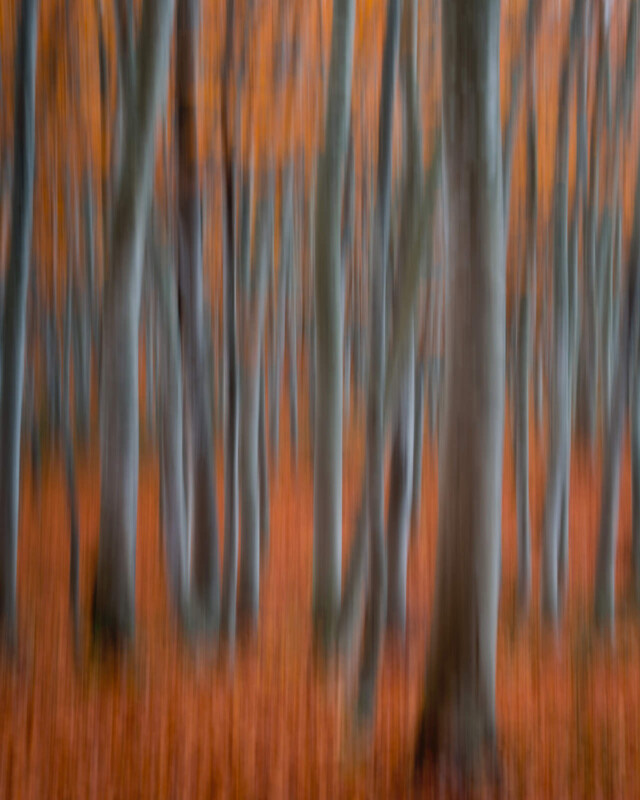
Fresh Content
Sometimes, when a photographer sticks to the same style of photography or editing, their new work can feel familiar, almost like you’ve seen it before. However, on occasion, there is no ‘feeling’ about it. In my experience, some of the famous photographers I follow, and the ones that are recommended to me, seem to re-post their work from time to time.
I’ve seen this done for several reasons, including a busy schedule, it’s an off-season for their style of photography, they are proud of that particular image, or for promotion. While I’m not inherently against any of these, even the most inspirational photos lose their luster after they’ve popped up in my feed 3 or 4 times. This was at an all-time high between 2020-2022, as many photographers were not able to travel.
This is where I feel The Mystery Box aspect really helped the lesser-known photographers I follow, and thus my viewing experience. While many of the famous photographers I follow resorted to re-posts or simply became inactive, most of the photography hobbyists I follow found ways to stay active, even if it meant photographing the mundane or shooting something completely different.
Again, I’m not demanding that famous or professional photographers grind out new images that are below their standards, I’m simply saying that following someone who isn’t weighed down by expectations can help keep your social media feed fresh, providing new work to keep you inspired.
The Benefits: Many of us use social media to get inspired. As much as I love professional-level work, seeing the same image re-posted time and time again makes me feel anything but. Seeing hobbyists, especially local photographers, find ways to remain active motivated me to explore and shoot my local areas. Rather than dwell on my lack of ability to photograph the iconic city views of Tokyo during the pandemic, I shifted my focus to shooting my local beach, architecture, parks, temples, and shrines.
While I’ll admit that I’m lucky to live in a rather scenic area, it’s not one that seems to attract many established photographers. I haven’t taken any world-beaters, but I have ended up with a few portfolio images and a deeper appreciation for my local area. I’ve also made more than a few sales off the resulting images, so that’s a nice bonus. If you use social media as a source of inspiration, there’s no better way to stay inspired than through a steady stream of unique content.
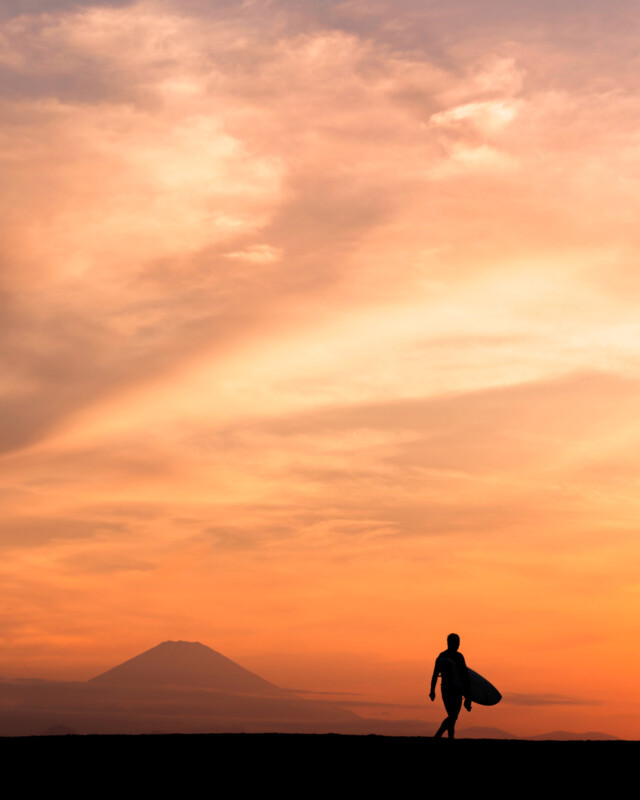
Imperfection
Back in the days when I spent most of my time on the photography side of the internet, I was exposed to some of the most amazing images I’d ever seen. To simply call them ‘portfolio worthy’ would be an understatement. Many of them were utterly flawless. The light: perfect. The compositions: immaculate. The locations: otherworldly. As someone just learning the ropes, they gave me something to aspire to.
However, as I continued to shoot and share photos, I noticed something. My work was getting better, but it was still light years behind the work I was seeing posted by others on a daily basis. What once inspired me to keep shooting, soon led to a mentality resulting in fewer and fewer successful outings. If the conditions weren’t quite right, no shot. If I couldn’t find the perfect composition, no shot. If a single person was in the frame, no shot. Days without a successful outing turned to weeks, then weeks into months, and thus I fell into photography slumps, wondering if I’d ever take a worthwhile photo ever again.
This is where, yet again, following lesser-known photographers helped me reignite my passion. Their work wasn’t perfect, but they were sharing it. What’s more, I liked it, despite the flaws. This is when I started spending less time looking solely at the work of professionals or famous photographers and shifted more toward hobbyists. Seeing work that was not only of a similar quality to my own but also in similar locations became my new inspiration to get out and shoot.
The Benefits: This can lead to fewer droughts and more successful outings. Will your ratio of portfolio-grade images per outing go down? Absolutely, but when you have a limited shooting schedule, you can’t let yourself get bogged down by the pressure of performing at a level that is infeasible under your current circumstances. In other words, it’s better to shoot the scenes and conditions you have, than endlessly yearn for the ones you don’t.
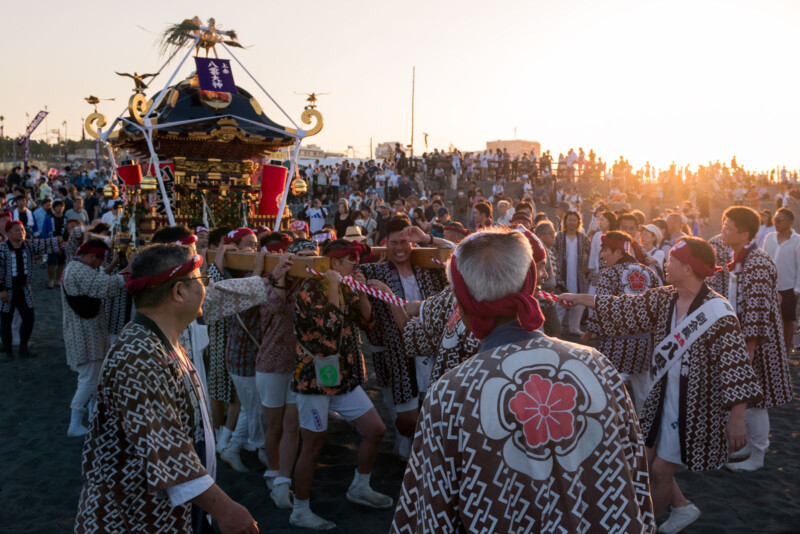
Interaction
For all its faults, social media has one major benefit: the ability to connect with photographers from all walks of life, regardless of where they live. Over the years, I’ve been able to connect with photographers from Switzerland to South Africa to America, just to name a few. None of these interactions would have been possible, had it not been for social media. Without these connections, I would have absolutely no one to talk to about photography.
This is, again, where I feel following lesser-known photographers has benefited me. When it comes to photographers with a large following, I’ve noticed that it usually tends to be more of a para-social relationship. This isn’t to blame photographers with large followings, I understand they’re busy people, and most of the comments they receive amount to three fire emojis in a row. I too, with my gargantuan following of 970 people will usually scroll past those comments. However, it’s nice to be able to have genuine interactions with other photographers.
Whether it be a comment, DM, or the contact page on their website, I’ve found that the likelihood of getting a response from someone is much higher, the lower their profile is. Apologies if this comes across as entitled, but if you’re not willing to engage in the social aspect of social media, then I feel like I’m not getting the full experience. Again, this isn’t to say they should have to respond to every comment, I’m simply pointing out that I have a more positive social experience with people who see me as a peer, not a fanboy.
The Benefits: It can help you meet like-minded photographers who you can chat with. As someone living in a non-English speaking country, discussing photography on a deep level can be a bit challenging, so I’ve found it to be a good way to meet people to chat with about this art form I love so much. Whether it’s sharing locations or just shooting the breeze, having fellow photographers to chat with can help you get more enjoyment out of the social aspects of social media and inspire you to keep shooting.
A Feeling of Camaraderie
Sometimes, what starts as a simple comment or a DM can bloom into something much more. Over the years I’ve made quite a few online photography buddies. These are fellow photographers I’ve never met in person but continue to keep in touch with via social media. Often, as these connections grow, we tend to build a sense of camaraderie.
Whether it’s seeing a fellow photographer get an image they’d been planning for months, reach a sales goal, win an award, or successfully run their first workshop, there’s something special about rooting for your peers to accomplish their goals. Regardless of how big or how small, I always feel excited when a lesser-known photographer takes a step forward. Watching them succeed in reaching their goals motivates me to work towards doing the same, regardless of how much coffee it takes.
The Benefits: Being a lesser-known photographer working towards big goals can be exhausting. There are ups and downs, and at times it can feel downright hopeless. However, seeing people in a similar situation to yourself achieve their goals, despite their limitations, can be a great way to light a fire under you. Rooting for them, and knowing they’re rooting for you, can sometimes make all the difference when it comes to staying motivated.
Personally, without these connections, I don’t think I would have the courage to take the risks required to make small steps toward big goals. I’ve still got a long way to go, and there’s no guarantee I’ll get there, but seeing my peers reach their goals has given me the confidence to at least try, and it can do the same for you.
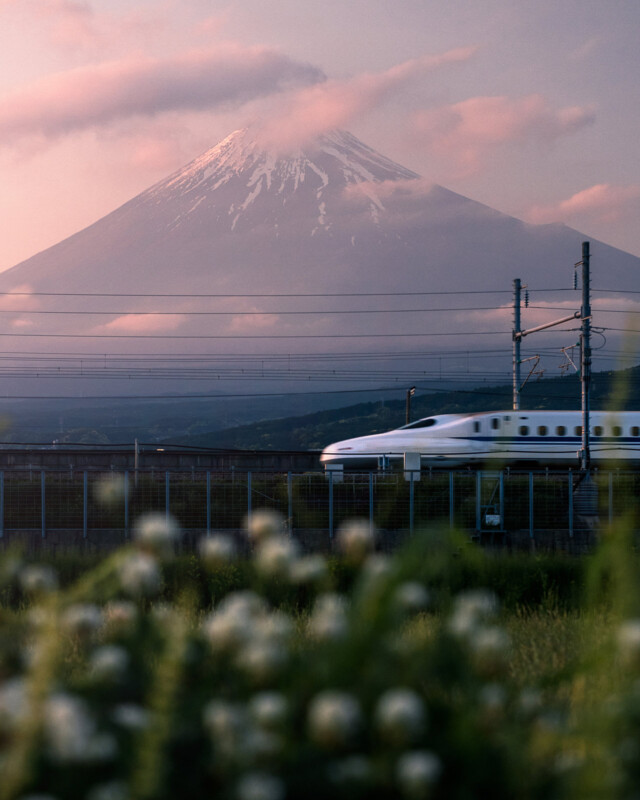
The Benefits of Following Local Photographers
Genuine Meetups
I’ve just finished talking about the benefits of social media, so it only feels fitting to highlight the main benefit of following local photographers: the ability to meet them in person. As much as I enjoy staying in touch with photographers from all over the world online, there’s nothing quite like getting together for a shoot.
While I have gone to meetups organized and attended by internationally famous photographers, it felt as if there was a perceived hierarchy at the events. In my experience, there seemed to be something of a disconnect between those who had already made a name for themselves, and those who were trying to get there. At times, it felt as though I was being talked at, not talked to. That isn’t to say all of my conversations have gone that way, I’ve met some friendly professionals willing to engage in genuine conversation, but it has often felt like a crapshoot. In contrast, when I meet with lesser-known local photographers, the conversations are genuine and the time flies by.
The Benefits: Despite my theater background, I’ve always been somewhat of an introvert. What’s more, I’ve never had any friends who are as passionate about photography as I am. Having local photographers to meet up with gives me someone to hang out with and talk to. Whether you talk about your favorite local photography spots or what you’re binging on our preferred streaming service, it can be good for your mental health and social life to have someone to talk to on a genuine human level.
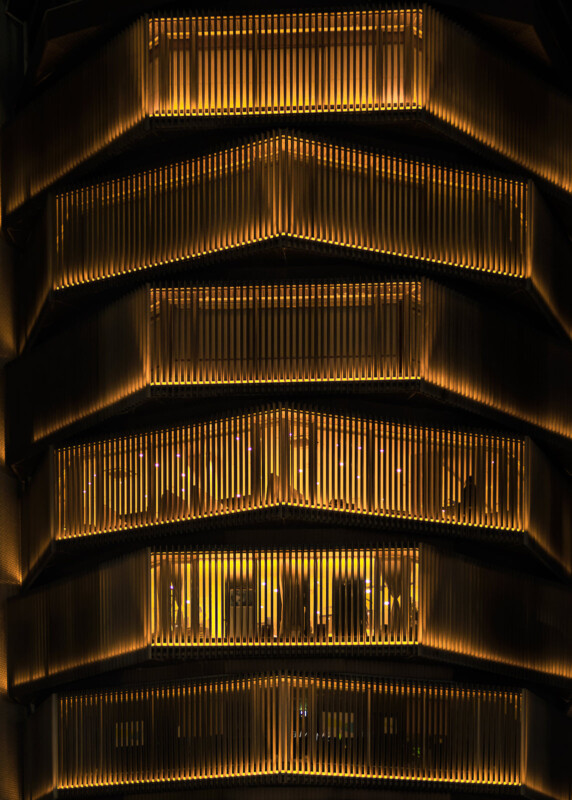
Locations
As I mentioned earlier, one of the main reasons I use social media is to find inspiration. There was a time when I found the work of famous photographers halfway across the world inspiring, but over time, it became the opposite. I often found myself frustrated by the fact that I couldn’t just pop over to the UK, Hong Kong, or Iceland to capture the same kinds of images. This negative energy often led to photography slumps, as I felt like I wasn’t able to create images of the same quality in my ‘boring’ locations. So, I started to find more photographers in Japan, and it made a world of difference.
I was seeing locations that I could visit more realistically, which re-fueled my passion. However, distance and time were still an issue, as I can only take a few domestic trips a year. I soon began to feel the same way, as I grew frustrated that I rarely got perfect conditions when I traveled. So, I decided to take it a step further and follow some local accounts, which again yielded positive results.
I love epic Nordic landscapes as much as the next person, but they don’t really inspire me when the place I live has nothing like that to shoot. While Mount Fuji is my favorite subject to photograph, when I only have a few days a month alone with my camera, the odds of getting the conditions I was seeing the famous photographers capture were minuscule. Seeing people create work from locations that I could go to without much planning has helped me stay active and motivated while still getting home in time to cook dinner.
The Benefits: This can motivate you to explore your local area with a photographer’s eye. When you have a limited number of days or hours with your camera, it can be helpful to stay close to home. This has been the case for me, regardless of where I’ve lived. Whether it was abstract architecture when I was living in suburban Kawasaki, the lesser-explored streets of Yokohama, or the beaches of my current city, I’ve always been able to stay active while remaining close to home.
Following local photographers can help you see ‘unmarketable’ locations around you in a new way. As I mentioned above, I’ve made more than my share of sales from these local photographs. It’s possible that the higher placement in search results these photos receive leads to them being easier to find. While your photos of iconic landmarks and skylines can easily get lost in a pile of millions, photographs from lesser-known areas are often easier to find in search results. Who knows, you may even end up finding a niche market in your own backyard.
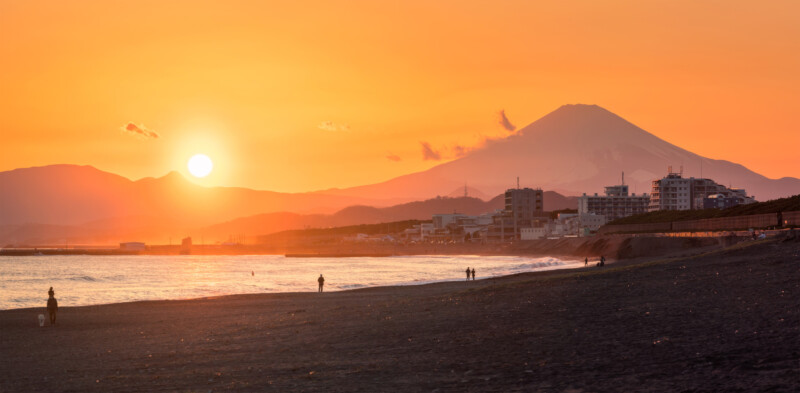
The Wrap-Up
While following well-known photographers can help you improve your skills as a new photographer, there is a great deal of merit in following your peers or even those with a smaller following than you. This isn’t to say we should all unfollow every famous photographer and only follow small accounts, mostly because it would cause a paradox loop, but that I feel people put too much value on the number of followers or level of fame someone has. I still follow plenty of established photographers, but the accounts I get the most out of are the ones that provide me with something more than a para-social experience.
I encourage everyone to find photographers with smaller followings and local photographers to supplement your daily viewing experience. You will be exposing yourself to new artistic voices for inspiration and you may find yourself with more people to engage with in meaningful ways. Besides, if you want to see world-class work that includes zero interaction with the artist, you can always go to an art museum.
About the author: Jordan McChesney is a landscape, cityscape, and abstract Canadian photographer living in Chigasaki, Japan. The opinions expressed in this article are solely those of the author. You can find more of McChesney’s work on his website, Facebook, and Instagram.